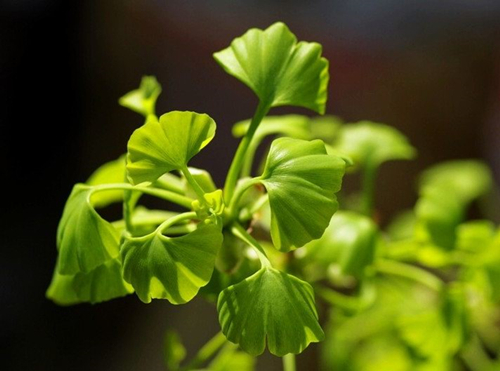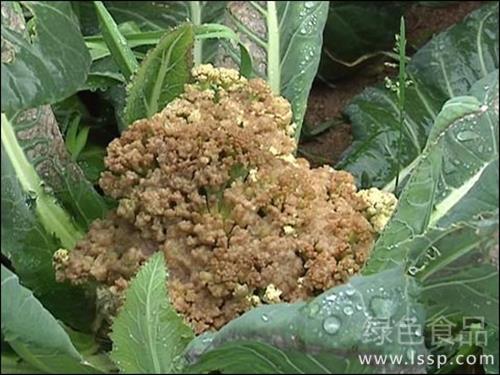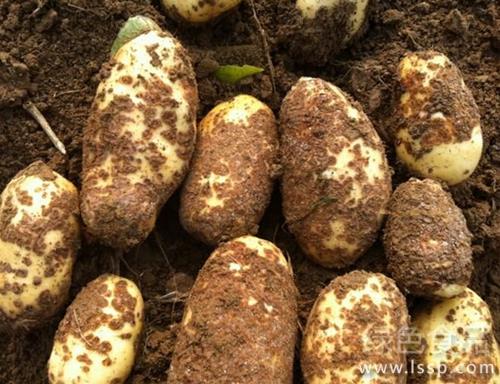Prevention and control methods of two diseases of ginkgo limited by diseases
In recent years, various localities have made great efforts to develop ginkgo production as one of the ways to increase farmers' income. However, ginkgo is often restricted by two kinds of diseases in production practice: one is "ginkgo seedling stem rot", and the other is "ginkgo brown spot". These two diseases were transmitted by Rain Water and caused re-infection.

Stem rot of ginkgo seedlings
"Ginkgo seedling stem rot" is a typical stem disease, which is characterized by "sagging", "upward expansion" and "middle nucleation". "sagging" is divided into two kinds, one is in the early stage of the disease, ginkgo seedling stem base close to the ground becomes dirty brown, slightly drooping. The other is in the middle of the disease, the leaves droop and do not fall off. "upward expansion" is in the middle of the disease, the disease spot gradually surrounds the base of the stem of ginkgo seedlings, and quickly expands upward. The "mesophytic nucleus" means that in the middle and later stage of the disease, the stem epithelium shrinks slightly, the pathogen continues to invade the xylem and pith, and the pulp becomes dark brown, gradually empty stems in the middle, and produces small black sclerotia, which extends to the roots, resulting in cortical erosion of the lower roots and death of the upper plants. Under normal circumstances, in the years of early plum entry and short duration of the rainy season, the disease is early and serious, resulting in seedling death, and in severe cases, the seedling death rate is more than 90%.
Ginkgo brown spot
Ginkgo brown spot is a typical leaf disease. The symptom is the large connection of the disease spot, that is, the primary reddish brown round spot with dark edge, which expands along the leaf vein, and most small disease spots connect into irregular large disease spots, forming a junction, and finally cover most of the leaves of ginkgo trees. the disease spot is scattered on both sides with small black spots (conidia disc). In summer and autumn, high temperature and humidity are conducive to the disease, resulting in early defoliation, ginkgo tree growth regression, weakening growth potential, affecting the emergence of new shoots and hanging fruit, but not dead seedlings and dead trees.
The key to the prevention and treatment of ginkgo "two diseases" depends on management. Specific countermeasures:
Strengthen the management of white orchard. For the garden where ginkgo trees are planted, the work of clearing the garden in winter should be done well, and the residual branches and fallen leaves in the garden should be destroyed in time to reduce the source of overwintering bacteria; combine to cultivate the soil in the ginkgo orchard and eradicate weeds in the garden in time; in the rainy season, clear ditches and discharge stains, reduce the humidity in the field and strengthen the disease resistance of ginkgo seedlings.
Strengthen fertilizer management. It is implored that both base fertilizer and topdressing should be based on organic fertilizer in order to improve the growth and sturdiness of seedlings and improve the disease resistance of ginkgo trees.
Strengthen the management of warm light. In the high temperature season, the seedling bed frame sunshade shed and cover the sunshade net; in the onset season, the seedling bed can be covered with straw to reduce the light intensity and soil temperature, reduce the incidence and promote the growth and growth of ginkgo seedlings.
Strengthen chemical prevention and control. Chemical agents can choose 400 grams / liter fluvazol EC (also precious star) 8000ml 10000 times liquid, or 62. 25% mancozeb ·nitrilazole wettable powder (also known as Xingjie) 600 times liquid, or 10% more than antimycin B wettable powder (also known as Baokang) 800 times solution was evenly sprayed on ginkgo seedlings or adult ginkgo tree leaves.
- Prev

Prevention and treatment of soft rot of falling cauliflower with rotten flower ball
Prevention and treatment of soft rot of falling cauliflower with rotten flower ball
- Next

Long scab on the epidermis affects the sales phase how to prevent and cure potato scab
Long scab on the epidermis affects the sales phase how to prevent and cure potato scab
Related
- Fuxing push coffee new agricultural production and marketing class: lack of small-scale processing plants
- Jujube rice field leisure farm deep ploughing Yilan for five years to create a space for organic food and play
- Nongyu Farm-A trial of organic papaya for brave women with advanced technology
- Four points for attention in the prevention and control of diseases and insect pests of edible fungi
- How to add nutrient solution to Edible Fungi
- Is there any good way to control edible fungus mites?
- Open Inoculation Technology of Edible Fungi
- Is there any clever way to use fertilizer for edible fungus in winter?
- What agents are used to kill the pathogens of edible fungi in the mushroom shed?
- Rapid drying of Edible Fungi

